今天遇到一个问题是关于仿射变换的,但是由于没有将仿射变换的具体原理型明白,看别人的代码看的很费解,最后终于在师兄的帮助下将原理弄明白了,我觉得最重要的是理解仿射变换可以看成是几种简单变换的复合实现,
具体实现形式即将几种简单变换的变换矩阵M相乘,这样就很容易理解啦
定义:仿射变换的功能是从二维坐标到二维坐标之间的线性变换,且保持二维图形的“平直性”和“平行性”。仿射变换可以通过一系列的原子变换的复合来实现,包括平移,缩放,翻转,旋转和剪切。
这类变换可以用一个3*3的矩阵M来表示,其最后一行为(0,0,1)。该变换矩阵将原坐标为(x,y)变换为新坐标(x',y'),
即
opencv中相应的函数是:
void warpAffine(InputArray src, OutputArray dst, InputArray M, Size dsize, int flags=INTER_LINEAR, int borderMode=BORDER_CONSTANT, const Scalar& borderValue=Scalar())¶
Parameters:
- src – input image.
- dst – output image that has the size dsize and the same type as src .
- M – transformation matrix,最重要的东东了,本文中着重讲M的构造
- dsize – size of the output image.ansformation ( ).
- borderMode – pixel extrapolation method (see borderInterpolate()); when borderMode=BORDER_TRANSPARENT , it means that the pixels in the destination image corresponding to the “outliers” in the source image are not modified by the function.
- borderValue – value used in case of a constant border; by default, it is 0.
下面介绍一些典型的仿射变换:
(1)平移,将每一点移到到(x+t , y+t),变换矩阵为
(2)缩放变换 将每一点的横坐标放大或缩小sx倍,纵坐标放大(缩小)到sy倍,变换矩阵为
(3)旋转变换原点:目标图形围绕原点顺时针旋转Θ 弧度,变换矩阵为
(4) 旋转变换 :目标图形以(x , y )为轴心顺时针旋转θ弧度,变换矩阵为
相当于两次平移与一次原点旋转变换的复合,即先将轴心(x,y)移到到原点,然后做旋转变换,最后将图片的左上角置为图片的原点,即
有的人可能会说为什么这么复杂呢,那是因为在opencv的图像处理中,所有对图像的处理都是从原点进行的,而图像的原点默认为图像的左上角,而我们对图像作旋转处理时一般以图像的中点为轴心,因此就需要做如下处理
如果你觉得这样很麻烦,可以使用opencv中自带的Mat getRotationMatrix2D(Point2f center, double angle, double scale)函数获得变换矩阵M,
center:旋转中心
angle:旋转弧度,一定要将角度转换成弧度
scale:缩放尺度
它得到的矩阵是:
其中α = scale * cos( angle ) , β = scale * sing( angle ) , ( center.x , center.y ) 表示旋转轴心
但是不得不说opencv的文档以及相关书籍中都把这个矩阵写错了,如下:
建议大家自己通过下式验证一下,即首先将轴心(x,y)移到原点,然后做旋转平绽放变换,最后再将图像的左上角转换为原点
没有去研究该函数的源码,不晓得源码中到底怎么写的,但是在别人的博客中看到这个函数貌似需要修正
opencv中还有一个函数:Mat getAffineTransform(InputArray src, InputArray dst)¶
它通过三组点对就可以获得它们之间的仿射变换,如果我们在一组图像变换中知道变换后的三组点,那么我们就可以利用该函数求得变换矩阵,然后对整张图片进行仿射变换
还有一种与仿射变换经常混淆的变换为透视变换,透视变换需要四组点对才能确定变换矩阵,由于仿射变换保持“平直性”与“平行性”,因此只需要三组点对,而透视变换没有这种约束,故需要四组点对
warpPerspective函数
主要作用:对图像进行透视变换,就是变形
函数的调用形式:
C++: void warpPerspective(InputArray src, OutputArray dst, InputArray M, Size dsize, int flags=INTER_LINEAR, int borderMode=BORDER_CONSTANT, const Scalar& borderValue=Scalar())
参数详解:
InputArray src:输入的图像
OutputArray dst:输出的图像
InputArray M:透视变换的矩阵
Size dsize:输出图像的大小
int flags=INTER_LINEAR:输出图像的插值方法,
combination of interpolation methods (INTER_LINEAR or INTER_NEAREST) and the optional flagWARP_INVERSE_MAP, that sets M as the inverse transformation (  )
)
int borderMode=BORDER_CONSTANT:图像边界的处理方式
const Scalar& borderValue=Scalar():边界的颜色设置,一般默认是0
函数原理:
透视变换(Perspective Transformation)是将图片投影到一个新的视平面(Viewing Plane),也称作投影映射(Projective Mapping)。通用的变换公式为:
u,v是原始图片左边,对应得到变换后的图片坐标x,y,其中
变换矩阵



重写之前的变换公式可以得到:
所以,已知变换对应的几个点就可以求取变换公式。反之,特定的变换公式也能新的变换后的图片。简单的看一个正方形到四边形的变换:
变换的4组对应点可以表示成:
根据变换公式得到:
定义几个辅助变量:


求解出的变换矩阵就可以将一个正方形变换到四边形。反之,四边形变换到正方形也是一样的。于是,我们通过两次变换:四边形变换到正方形+正方形变换到四边形就可以将任意一个四边形变换到另一个四边形。
- #include<cv.h>
- #include<highgui.h>
- #pragma comment(lib, "cv.lib")
- #pragma comment(lib, "cxcore.lib")
- #pragma comment(lib, "highgui.lib")
- int main()
- {
- CvPoint2D32f srcTri[4], dstTri[4];
- CvMat* warp_mat = cvCreateMat (3, 3, CV_32FC1);
- IplImage* src = NULL;
- IplImage* dst = NULL;
- src = cvLoadImage ("test.png", 1);
- dst = cvCloneImage (src);
- dst->origin = src->origin;
- cvZero (dst);
- srcTri[0].x = 0;
- srcTri[0].y = 0;
- srcTri[1].x = src->width - 1;
- srcTri[1].y = 0;
- srcTri[2].x = 0;
- srcTri[2].y = src->height - 1;
- srcTri[3].x = src->width - 1;
- srcTri[3].y = src->height - 1;
- dstTri[0].x = src->width * 0.05;
- dstTri[0].y = src->height * 0.33;
- dstTri[1].x = src->width * 0.9;
- dstTri[1].y = src->height * 0.25;
- dstTri[2].x = src->width * 0.2;
- dstTri[2].y = src->height * 0.7;
- dstTri[3].x = src->width * 0.8;
- dstTri[3].y = src->height * 0.9;
- cvGetPerspectiveTransform (srcTri, dstTri, warp_mat);
- cvWarpPerspective (src, dst, warp_mat);
- cvNamedWindow("src", 1);
- cvShowImage("src", src);
- cvNamedWindow ("Affine_Transform", 1);
- cvShowImage ("Affine_Transform", dst);
- cvWaitKey (0);
- cvReleaseImage (&src);
- cvReleaseImage (&dst);
- cvReleaseMat (&warp_mat);
- return 0;
- }
今天遇到一个问题是关于仿射变换的,但是由于没有将仿射变换的具体原理型明白,看别人的代码看的很费解,最后终于在师兄的帮助下将原理弄明白了,我觉得最重要的是理解仿射变换可以看成是几种简单变换的复合实现,
具体实现形式即将几种简单变换的变换矩阵M相乘,这样就很容易理解啦
定义:仿射变换的功能是从二维坐标到二维坐标之间的线性变换,且保持二维图形的“平直性”和“平行性”。仿射变换可以通过一系列的原子变换的复合来实现,包括平移,缩放,翻转,旋转和剪切。
这类变换可以用一个3*3的矩阵M来表示,其最后一行为(0,0,1)。该变换矩阵将原坐标为(x,y)变换为新坐标(x',y'),
即
opencv中相应的函数是:
void warpAffine(InputArray src, OutputArray dst, InputArray M, Size dsize, int flags=INTER_LINEAR, int borderMode=BORDER_CONSTANT, const Scalar& borderValue=Scalar())¶
Parameters:
- src – input image.
- dst – output image that has the size dsize and the same type as src .
- M – transformation matrix,最重要的东东了,本文中着重讲M的构造
- dsize – size of the output image.
- flags – combination of interpolation methods (see resize() ) and the optional flag WARP_INVERSE_MAP that means that M is the inverse transformation ( ).
- borderMode – pixel extrapolation method (see borderInterpolate()); when borderMode=BORDER_TRANSPARENT , it means that the pixels in the destination image corresponding to the “outliers” in the source image are not modified by the function.
- borderValue – value used in case of a constant border; by default, it is 0.
下面介绍一些典型的仿射变换:
(1)平移,将每一点移到到(x+t , y+t),变换矩阵为
(2)缩放变换 将每一点的横坐标放大或缩小sx倍,纵坐标放大(缩小)到sy倍,变换矩阵为
(3)旋转变换原点:目标图形围绕原点顺时针旋转Θ 弧度,变换矩阵为
(4) 旋转变换 :目标图形以(x , y )为轴心顺时针旋转θ弧度,变换矩阵为
相当于两次平移与一次原点旋转变换的复合,即先将轴心(x,y)移到到原点,然后做旋转变换,最后将图片的左上角置为图片的原点,即
有的人可能会说为什么这么复杂呢,那是因为在opencv的图像处理中,所有对图像的处理都是从原点进行的,而图像的原点默认为图像的左上角,而我们对图像作旋转处理时一般以图像的中点为轴心,因此就需要做如下处理
如果你觉得这样很麻烦,可以使用opencv中自带的Mat getRotationMatrix2D(Point2f center, double angle, double scale)函数获得变换矩阵M,
center:旋转中心
angle:旋转弧度,一定要将角度转换成弧度
scale:缩放尺度
它得到的矩阵是:
opencv中还有一个函数:Mat getAffineTransform(InputArray src, InputArray dst)¶
它通过三组点对就可以获得它们之间的仿射变换,如果我们在一组图像变换中知道变换后的三组点,那么我们就可以利用该函数求得变换矩阵,然后对整张图片进行仿射变换
还有一种与仿射变换经常混淆的变换为透视变换,透视变换需要四组点对才能确定变换矩阵,由于仿射变换保持“平直性”与“平行性”,因此只需要三组点对,而透视变换没有这种约束,故需要四组点对
本文将openCV中的RANSAC代码全部挑选出来,进行分析和讲解,以便大家更好的理解RANSAC算法。代码我都试过,可以直接运行。
在计算机视觉和图像处理等很多领域,都需要用到RANSAC算法。openCV中也有封装好的RANSAC算法,以便于人们使用。关于RANSAC算法的一些应用,可以看我的另一篇博客:
利用SIFT和RANSAC算法(openCV框架)实现物体的检测与定位,并求出变换矩阵(findFundamentalMat和findHomography的比较)
但是前几天师弟在使用openCV自带的RANSAC算法时,发现实验的运行时间并不会随着输入数据的增加而增加,感觉和理论上的不太相符。所以我就花了点时间,把openCV中关于RANSAC的源代码全部复制出来研究了一下。以便我们更加清晰的了解RANSAC算法的实际运行过程。
首先看两个类
|
1
2
3
4
5
6
7
8
9
10
11
12
13
14
15
16
17
18
19
20
21
22
23
24
25
26
27
28
29
30
31
32
33
34
35
36
37
38
39
40
41
42
43
44
45
46
47
48
|
//模型估计的基类,提供了估计矩阵的各种虚函数
//置信度设为0。99 循环次数设置为了2000
class
CvModelEstimator2
{
public
:
CvModelEstimator2(
int
_modelPoints, CvSize _modelSize,
int
_maxBasicSolutions);
virtual ~CvModelEstimator2();
virtual
int
runKernel(
const
CvMat* m1,
const
CvMat* m2, CvMat* model )=
0
;
//virtual bool runLMeDS( const CvMat* m1, const CvMat* m2, CvMat* model,
// CvMat* mask, double confidence=0.99, int maxIters=2000 );
virtual bool runRANSAC(
const
CvMat* m1,
const
CvMat* m2, CvMat* model,
CvMat* mask,
double
threshold,
double
confidence=
0.99
,
int
maxIters=
2000
);
virtual bool refine(
const
CvMat*,
const
CvMat*, CvMat*,
int
) {
return
true
; }
//virtual void setSeed( int64 seed );
protected
:
virtual
void
computeReprojError(
const
CvMat* m1,
const
CvMat* m2,
const
CvMat* model, CvMat* error ) =
0
;
virtual
int
findInliers(
const
CvMat* m1,
const
CvMat* m2,
const
CvMat* model, CvMat* error,
CvMat* mask,
double
threshold );
virtual bool getSubset(
const
CvMat* m1,
const
CvMat* m2,
CvMat* ms1, CvMat* ms2,
int
maxAttempts=
1000
);
virtual bool checkSubset(
const
CvMat* ms1,
int
count );
CvRNG rng;
int
modelPoints;
CvSize modelSize;
int
maxBasicSolutions;
bool checkPartialSubsets;
};
//单应矩阵估计的子类
class
CvHomographyEstimator :
public
CvModelEstimator2
{
public
:
CvHomographyEstimator(
int
modelPoints );
virtual
int
runKernel(
const
CvMat* m1,
const
CvMat* m2, CvMat* model );
virtual bool refine(
const
CvMat* m1,
const
CvMat* m2,
CvMat* model,
int
maxIters );
protected
:
virtual
void
computeReprojError(
const
CvMat* m1,
const
CvMat* m2,
const
CvMat* model, CvMat* error );
};
|
CvHomographyEstimator继承自CvModelEstimator2,同样的,从名字也就可以看出,这个类使用来估计单应矩阵的。
接下来是两个类的构造函数和析构函数,这个没啥好说的了,基本都是默认的。
|
1
2
3
4
5
6
7
8
9
10
11
12
13
14
15
16
17
18
19
20
21
22
23
24
25
26
27
28
29
30
31
32
33
34
35
36
37
38
39
40
41
42
43
44
45
46
47
48
49
50
51
52
53
54
55
56
57
58
59
60
61
62
63
64
65
66
67
68
69
70
71
72
73
74
75
76
77
78
79
80
81
82
83
84
85
86
87
88
89
90
91
92
93
94
95
96
97
98
99
100
101
102
103
104
105
106
107
108
109
110
111
112
113
114
115
116
117
118
119
120
121
122
123
124
125
126
127
128
129
130
131
132
133
134
135
136
137
138
139
140
141
142
143
144
145
146
147
148
149
150
151
152
153
154
155
156
157
158
159
160
161
162
163
164
165
166
167
168
169
170
171
172
173
174
175
176
177
178
179
180
181
182
183
184
185
186
187
188
189
190
191
192
193
194
195
196
197
198
199
200
201
202
203
204
205
206
207
208
209
210
211
212
213
214
215
216
217
218
219
220
221
222
223
224
225
226
227
228
229
230
231
232
233
234
235
236
237
238
239
240
241
242
243
244
245
246
247
248
249
250
251
252
253
254
255
256
257
258
259
260
261
262
263
264
265
266
267
268
269
270
271
272
273
274
275
276
277
278
279
280
281
282
283
284
285
286
287
288
289
290
291
292
293
294
295
296
297
298
299
300
301
302
303
304
305
306
307
308
309
310
311
312
313
314
315
316
317
318
319
320
321
322
323
324
325
326
327
328
329
330
331
332
333
334
335
336
337
338
339
340
341
342
343
344
345
346
347
348
349
350
351
352
353
354
355
356
357
358
359
360
361
362
363
364
365
366
367
368
369
370
371
372
373
374
375
376
377
378
379
380
381
382
383
384
385
386
387
388
389
390
391
392
393
394
395
396
397
398
399
400
401
402
403
404
405
406
407
408
409
410
411
412
413
414
415
416
417
418
419
420
421
422
423
424
425
426
427
428
429
430
431
432
433
434
435
436
437
438
439
440
441
442
443
444
445
446
447
448
449
450
451
452
453
454
455
456
457
458
459
460
461
462
463
464
465
466
467
468
469
470
471
472
473
474
475
476
477
478
479
480
481
482
483
484
485
486
487
488
489
490
491
492
493
494
495
496
497
498
499
500
501
502
503
504
505
506
507
508
509
510
511
512
513
514
515
516
517
518
519
520
521
522
523
524
525
526
527
528
529
530
531
532
533
534
535
536
537
538
539
540
541
542
543
544
545
546
547
548
549
550
551
552
553
554
555
556
557
558
559
560
561
562
563
564
565
566
567
568
569
570
571
572
573
574
575
576
577
578
579
580
581
582
583
584
585
586
587
588
589
590
591
592
593
594
595
596
597
598
599
600
601
602
603
604
605
606
607
608
609
610
611
612
613
614
615
616
617
618
619
620
621
622
623
624
625
626
627
628
629
630
631
632
633
634
635
636
637
638
639
640
641
642
643
644
645
646
647
648
649
650
651
652
653
654
655
656
657
658
659
660
661
662
663
664
665
666
667
668
669
670
671
672
673
674
675
676
677
678
679
680
681
682
683
684
685
686
687
688
689
690
691
692
693
694
695
696
697
698
699
700
701
702
703
704
705
706
707
708
709
710
711
712
713
714
715
716
717
718
719
720
721
722
723
724
725
726
727
728
729
730
731
732
733
734
735
736
737
738
739
740
741
742
743
744
745
746
747
748
749
750
751
752
753
754
755
756
757
758
759
760
761
762
763
764
765
766
767
768
769
770
771
772
773
774
775
776
777
778
779
780
781
782
783
784
785
786
787
788
789
790
791
792
793
794
795
796
|
本范例的代码主要都是 学习OpenCV——通过KeyPoints进行目标定位这篇博客提供的,然后在它的基础上稍加修改,检测keypoints点的检测器是SURF,获取描述子也是用到SURF来描述,而用到的匹配器是FlannBased,匹配的方式是Knn方式,最后通过findHomography寻找单映射矩阵,perspectiveTransform获得最终的目标,在这个过程中还通过单映射矩阵来进一步去除伪匹配,这里只是贴出代码和代码解析,至于原理还没弄得特别明白,希望接下来可以继续学习,学懂了算法原理再来补充。 1、代码实现
|








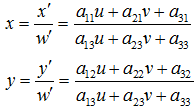

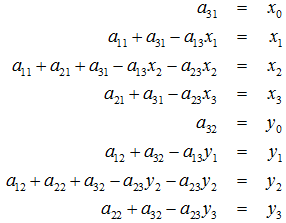

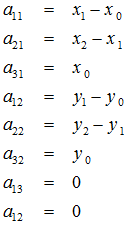
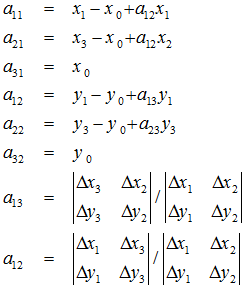
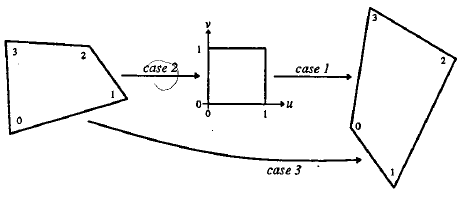













 9万+
9万+











 被折叠的 条评论
为什么被折叠?
被折叠的 条评论
为什么被折叠?








